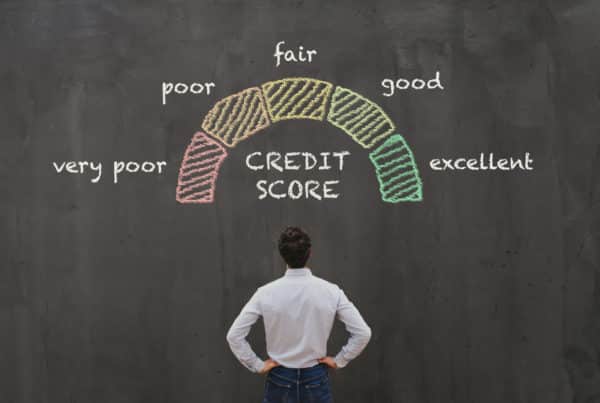Saving for a house deposit can take time, especially as Australian property prices continue to rise. The good news is that if you can be disciplined with your spending, take the time to build a workable budget and research any support options available to you, saving up for a home loan deposit can be easier (and less expensive) than it first sounds.
Here’s our 3 key steps to saving up for a house deposit:
1. Figure out your expected deposit size
Generally speaking, a typical house deposit is 20% of the property’s value, but many lenders will accept a deposit as low as 10% or even 5%.
However, borrowers should be aware that a smaller deposit means borrowing more money and paying more interest over the length of your home loan as a result. But getting into the Australian property market sooner rather than later could mean you have the opportunity to own your home outright faster, so that can be a price worth paying.
When your deposit is less than 20% (depending on the lenders terms, conditions and eligibility criteria), you usually have to pay lenders mortgage insurance (LMI), which can add thousands to your costs up-front or over time.
For customers who would prefer to avoid lenders mortgage insurance, Homestar has a no-LMI home loan offering that allows borrowers to choose the home loan features that work best for them. Visit our Star Choice home loan page to find out more!
How much deposit do you need?
There are two typical components to a property purchase: the deposit (the amount you have saved up) and the home loan (the money you will need to borrow). How much deposit you will need towards your property purchase depends on the home loan that you qualify for.
A great way to work out how much you might be able to afford now is by looking at how much rent you pay now. Then, use our rent vs mortgage repayment calculator and see how projected mortgage repayments could compare to your rent.
If you’re:
- Buying a home, you’ll generally need at least a 10% deposit, however restrictions may apply if you have less than a 20% deposit.
- Building a home, you’ll generally need a 20% deposit of the total cost (to buy land and fund the build).
- Buying or building a residential investment property, you’ll generally need at least a 40% deposit.
- Using a residential investment property you already own as security for a new loan, you’ll generally need at least a 40% deposit.
In some circumstances, the initial deposit you need for your house purchase may be lower. Even if you don’t have your full deposit just yet, you can reach out to our customer support team and one of our Homestar Loan Specialists will be in touch.
2. Start working out your savings plan
Once you have your deposit goal in mind, it’s time to get serious about saving. Here are some quick, essential tips:
- Examine your spending. Tracking your spending (whether you’re using an app, checking your online banking statements or working with a spreadsheet) can help you get a detailed breakdown of what you really spend each month.
- Set a budget. Using your spending breakdown, set yourself a realistic budget and work out where you can make cuts, adjustments or changes to your current outgoing spending.
- Pay off urgent debts first. When looking to purchase a property, getting any debt under control as fast as possible is an important move. Be mindful to prioritise high interest debt first: a HECS debt is much less urgent than credit card debt.
- Maximise your savings. Put your money to work while building your deposit with a high interest savings account or consider putting some of your savings in a term deposit to accrue interest.
- Look over your assets. If you have any assets you could sell, like a car you’re willing to part ways with, or some shares, you might consider selling them and putting the money towards your deposit.
Besides your initial deposit (and any up-front costs such as lender’s fees, LMI or legal documentation), there’s one more big upfront cost to watch out for: stamp duty. If you’re a first home buyer you may be eligible for a discount or partial exemption on stamp duty (depending on which Australian state you live).
You can read more about the potential savings in this state-by-state stamp duty guide, or find out more details with our stamp duty calculator.
3. If need be, get help with your deposit
When you’re pulling together a home loan deposit, every dollar counts. It can feel like a big undertaking at first, but if you set out a clear plan and take advantage of all the different schemes and incentives available in your state, it can help to bring the dream of owning your own home that little bit closer.
You don’t always have to be a first home buyer, either! Some states and territories offer stamp duty discounts to owner occupiers, meaning you can pay less than an investor or a buyer from overseas.
Here are some other ways you could get help with your deposit:
- Parental guarantor. If your parents own their home (or the majority of it) and they’re willing to guarantee part of your deposit, you can avoid LMI and save a smaller deposit. Read more about guarantor mortgages.
- Cash gift. If your parents are able and willing (and we understand this is not often the case!) they could provide a cash gift to boost your deposit. There are just a few rules you need to be aware of.
- First home owner grant. In some states there are cash grants for first home buyers. You usually need to buy a newly built home under a certain price in order to qualify. If eligible, you can use the grant to form part of your deposit.
- Other government help. The federal government’s First Home Super Saver Scheme lets you make extra contributions to your superannuation, pay less tax and then use the money as part of your deposit. The First Home Loan Deposit Scheme also allows up to 10,000 first home buyers to save 10% deposits and get homes, without needing to pay LMI.
- Using existing equity. Equity is the difference between a property’s value and the amount you owe on it. If you sold your property and repaid your home loan, your equity would be the amount you have left. For example, if you have a house worth $400,000 with a $100,000 home loan, you have $300,000 of equity in the property. Rather than having to save up the cash, you may be able to use the equity in your existing home to buy your next home, do renovations or to purchase an investment property.
Disclaimer: This article is not intended as legal, financial or investment advice and should not be construed or relied on as such. Before making any commitment of a legal or financial nature you should seek advice from a qualified and registered Australian legal practitioner or financial or investment advisor.





